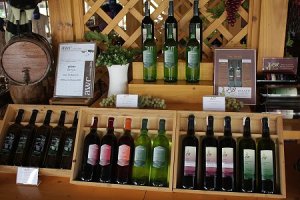As always If you want to Export your Wine somewhere you haver to know your competitors. In this case we write about Export your Wine for Thai market then you must know everything about who Export Wine to Thailand and who produces Wine in Thailand. Thailand has in fact three distinct regions of wine making:
The first one: In the north there is Chateau de Loei, in the Phu Rua Valley of Loei Province and Chateau Shala One, in Phichit Province. The first vines were planted at Chateau de Loei in 1991.
The second region is the Khao Yai area of Nakhorn Ratchasima Province. Here you can find the vineyards of PB Valley, GranMonte and Chateau des Brumes. These days they are so well known that the whole area is called PB Valley Khao Yai Winery.
Khao Yai is the home to the largest wine producing region in Thailand. As well as the three main wineries, they are also many small independent farmers who sell their crops to the wineries. Instead of going for quantity, many of the wineries instead decided to go for quality. They also managed to adapt the wine so that it was suitable to eat with spicy food. During the 1990′s, PB Khao Yai Winery planted 50 different species of grapes until they found their vintage in 1999.
The third region is in the Chao Phraya delta. Here you can find Siam Winery south west of Bangkok. Here soil is rich and very fertile and takes a lot of looking after. Every year during the rainy season, the people need to reinforce the isles to make sure they do not collapse, thereby destroying the vines. These unique conditions make the farmers work hard on the 56 000 rais of vineyards (9,000 ha) in order to produce grapes for the local market. Siam Winery is the largest single grape buyer in the area.






